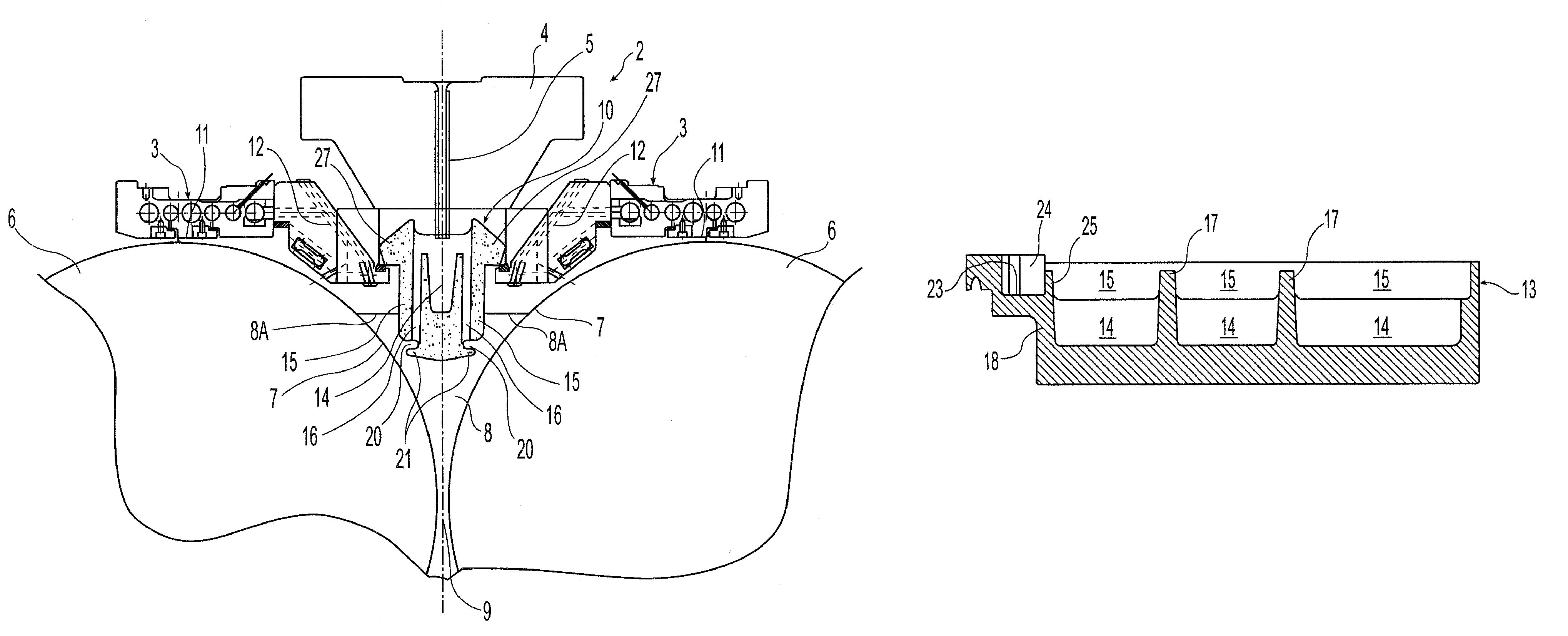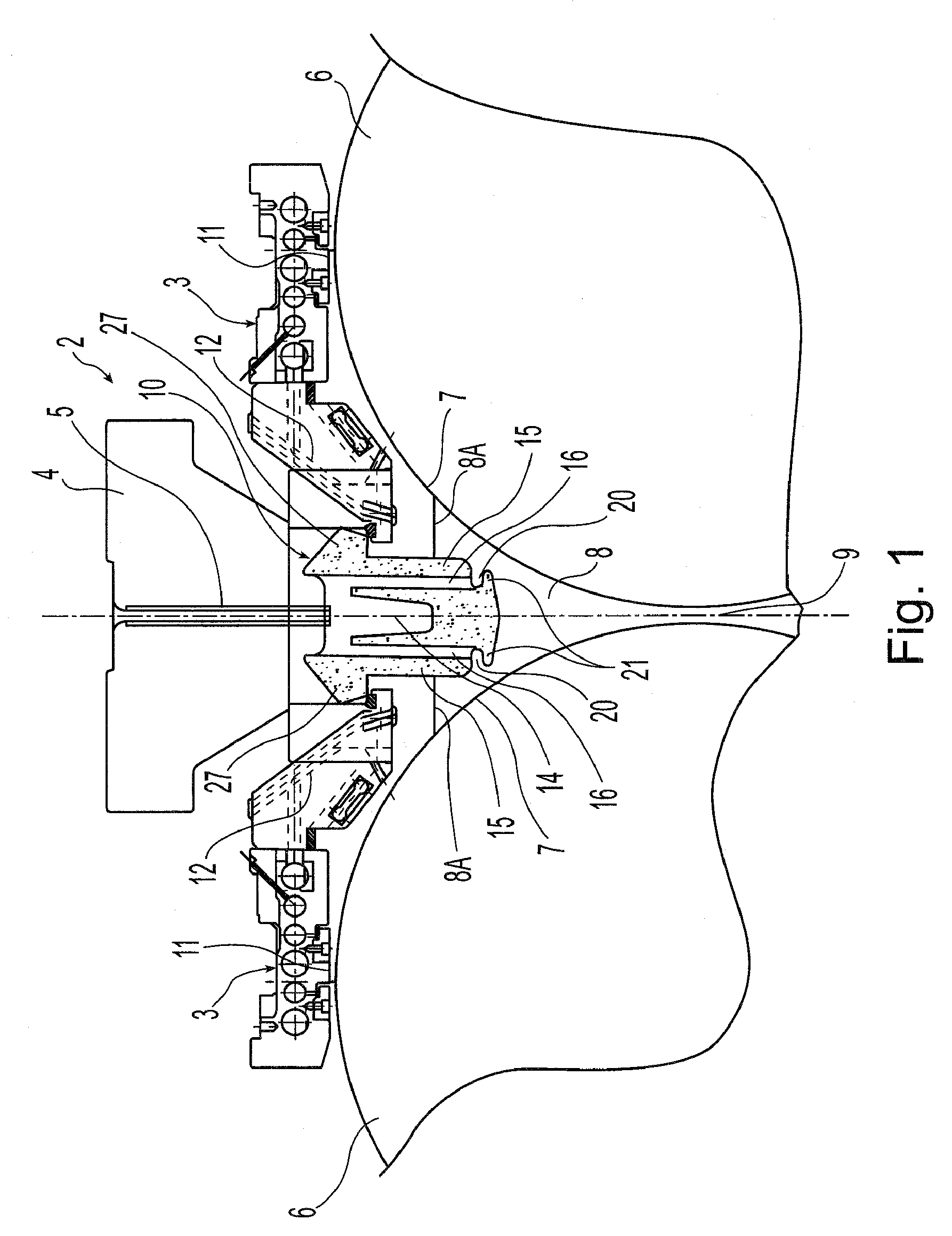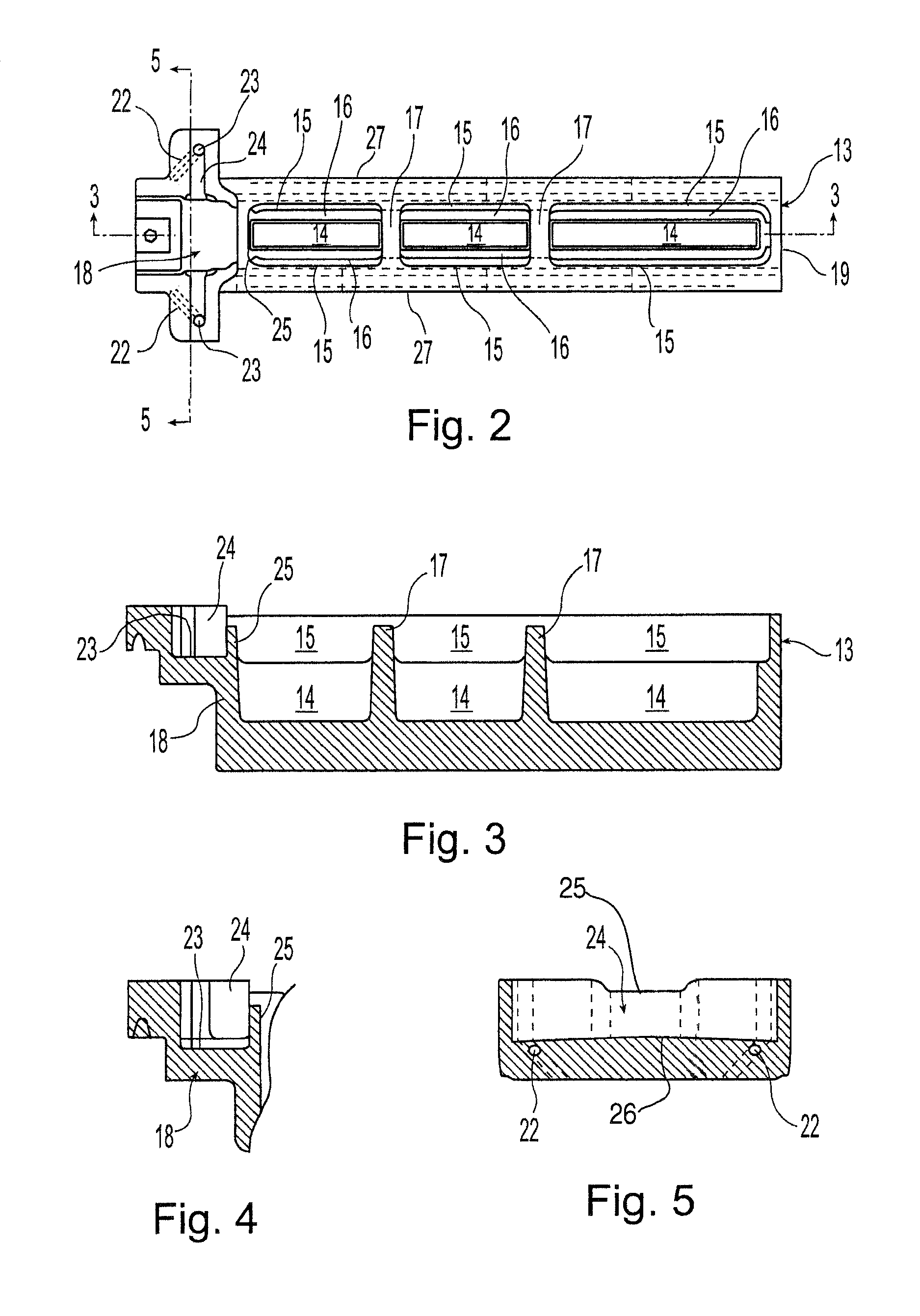Delivery nozzle with more uniform flow and method of continuous casting by use thereof
a technology of nozzle and nozzle, which is applied in the direction of manufacturing tools, liquid transfer devices, furnaces, etc., can solve the problems of premature solidification of molten metal, surface defects, microcracking of thin cast strips, etc., and achieve the effect of reducing the kinetic energy of molten metal and dissolving a substantial part of the kinetic energy presen
- Summary
- Abstract
- Description
- Claims
- Application Information
AI Technical Summary
Benefits of technology
Problems solved by technology
Method used
Image
Examples
Embodiment Construction
[0035]Referring to FIG. 1, the metal strip casting apparatus 2 includes a metal delivery nozzle 10 located below a tundish 4 and above casting rolls 6. Casting rolls 6 are laterally positioned with nip 9 formed between them. Tundish 4 receives metal from a ladle (not shown) and delivers the molten metal to delivery nozzle 10. A shroud 5 may extend from tundish 4 and into delivery nozzle 10, for the purpose of transferring molten metal into delivery nozzle 10. In the alternative, tundish 4 may transfer metal to delivery nozzle 10 via a hole in the bottom of tundish 4. Below delivery nozzle 10, a casting pool 8 having surface 8A is formed supported on the casting surfaces 7 of casting rolls 6 adjacent nip 9. Casting pool 8 is constrained at the ends of the casting rolls and side dams or plates (not shown) positioned against the sides of the casting rolls. Delivery nozzle 10 controls molten metal flow into casting pool 8. Generally, delivery nozzle 10 extends into casting pool 8 during...
PUM
| Property | Measurement | Unit |
|---|---|---|
| temperature | aaaaa | aaaaa |
| rate of heat loss | aaaaa | aaaaa |
| heat loss | aaaaa | aaaaa |
Abstract
Description
Claims
Application Information
 Login to View More
Login to View More - R&D
- Intellectual Property
- Life Sciences
- Materials
- Tech Scout
- Unparalleled Data Quality
- Higher Quality Content
- 60% Fewer Hallucinations
Browse by: Latest US Patents, China's latest patents, Technical Efficacy Thesaurus, Application Domain, Technology Topic, Popular Technical Reports.
© 2025 PatSnap. All rights reserved.Legal|Privacy policy|Modern Slavery Act Transparency Statement|Sitemap|About US| Contact US: help@patsnap.com



